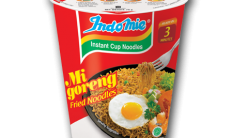Cambodia’s economy grows by 13% in 2005: IMF
Channel NewsAsia
PHNOM PENH : Cambodia’s economy in 2005 grew twice as quickly as in the previous year on the back of booming tourism and strong garment exports, the International Monetary Fund said.
However, growth is expected to slow substantially over the current calendar year with record oil prices partially to blame.
For 2005 the IMF projected the kingdom’s gross domestic product (GDP) grew by 13 percent, against 6.0 percent in 2004, saying Cambodia was one of the fastest growing economies in the region.
“Cambodia’s economy did very well last year, an excellent result,” Jeremy Carter, the IMF’s Asia Pacific Department, said at a news conference.
Cambodia’s garment output jumped over 12 percent thanks to US and European restrictions on Chinese garment imports, Carter said, adding the kingdom’s robust tourism and strong construction business also helped the economy.
Cambodia is struggling to recover from three decades of civil war that ended in 1998 and tourism is one of the impoverished country’s few viable money-spinners. The famed Angkor temple complex in northwest Cambodia remains its biggest draw.
In 2005, tourist arrivals in Cambodia surged 35 percent to 1.4 million, mostly from Asia. The government has been trying to persuade holidaymakers to stay longer and see sights other than the World Heritage-listed Angkor temples.
Meanwhile, Carter, who met Prime Minister Hun Sen on Tuesday, said the government should improve governance to lure more foreign investors.
“We do believe that improving governance is critical if you want to attract foreign investment,” he said, adding Cambodia also needs to increase tax revenue.
“Attempts to improve governance do include dealing with corruption and we support the passage of an appropriate anti-corruption law and its smooth implementation,” he said.
The premier said Thursday on national radio that the Cambodian government’s efforts to boost the economy have been unfairly ignored.
“When the economy and agricultural output is not so good, some blame the government’s management,” he said.
“But if we have good production and a good economy, they say it was caused by the good weather, so the government never receives anything in return for its work.”
Carter said the IMF expected Cambodia’s economy to grow just around five percent in 2014, due to high oil prices, a slowdown in tourism, and fierce competition from China in the garment industry.
The US$1.9 billion garment sector provides the kingdom with more than 80 percent of its export earnings and employs some 280,000 workers.
Under the 30-year-old multi-fibre arrangement (MFA), Cambodia was given special access to the US market through a 1999 trade deal that granted quotas in return for improved labour conditions monitored by the UN’s labour agency.
The arrangement was hailed by international buyers, such as US apparel giant Gap Inc, which helped local manufacturers to mould an image of themselves as responsible corporate citizens who eschewed “sweatshop” labour.
In January, the IMF cleared US$82 million owed by Cambodia in a bid to support its economy, amounting to total debt relief of all money owed by the kingdom to the global financial body before January 2005. – AFP/de





